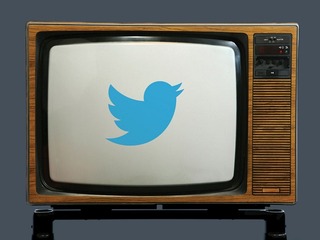

As Twitter gets closer and closer to its inevitable IPO, the network has to prove that it can be a significant source of revenue for advertisers and media companies. The network launched a music app to prove it can drive music downloads, and it has been making a big push to ingratiate itself with television as well, trying to convince them that more tweets will mean higher ratings.
So here is some good news for Twitter: it turns out that it does actually have an impact on television ratings. In fact, the relationship between Twitter and television is one that is mutually benefitial, according to a new study out from Nielsen on Tuesday.
Nielsen researchers analyzed a total of 221 episodes, analyzing minute-to-minute trends in the live TV ratings and tweets, using Nielsen’s SocialGuide, the company it bought in November. And the results showed that tweets caused ratings spikes for 29% of those episodes.
Even more interesting: the ratings spikes for 48% of the shows actually caused an increase in tweets, suggesting that Twitter and television have a symbiotic relationship, where each one needs the other to thrive.


“Using time series analysis, we saw a statistically significant causal influence indicating that a spike in TV ratings can increase the volume of tweets, and, conversely, a spike in tweets can increase tune-in,” Paul Donato, Nielsen’s chief research officer, said in a statement. “This rigorous, research-based approach provides our clients and the media industry with a better understanding of the interplay between Twitter and broadcast TV viewing.”
The study also broke the numbers down by genre, with competitive reality shows, which would include shows like American Idol, The Voice, America’s Got Talent and The X Factor, leading the pack, with 44% of those episodes being impacted by increased Twitter chatter.
The study showed that 37% of comedy shows, 29% of sports broadcasts and only 18% of dramas, were impacted as well.


Of course, increased Twitter chatter does not always mean that people are actually watching the show in question. Remember Sharknado? People liked talking about the ridiculousness of the premise more than actually sitting down to watch it.
But this is good news for Twitter, which has made ts relationship with television an integral part of its monetization and advertising strategy.
It was reported back in April that Twitter was in talks with both Viacom and Comcast’s NBCUniversal to host television clips on the site, allowing it to stream videos on its site and then split the resulting ad revenue with the networks,
Twitter already has deals with ESPN, the Weather Channel and Turner Broadcasting, and these new partnerships would bring clips from other big channels, with popular content, including USA, MTV, Comedy Central, Spike and Nickelodeon.
More recently, Twitter took its tv ad targeting software, which it premiered in beta mode in May, and expanded it to to all U.S. advertisers that run national television spots.
The technology allows advertisers to engage directly with people on Twitter who have been exposed to their ads on live television.
It works by identifying Tweets that correspond with that television show. Because the person was engaged enough to tweet about it, the company figures that they watched the ads as well (which, in all honesty, is a bit of a leap. It is more likely they were sending the tweets in question while the ads were playing). Twitter will then push out promoted tweets that extend those advertisements.
(Image source: http://venturebeat.com)

















